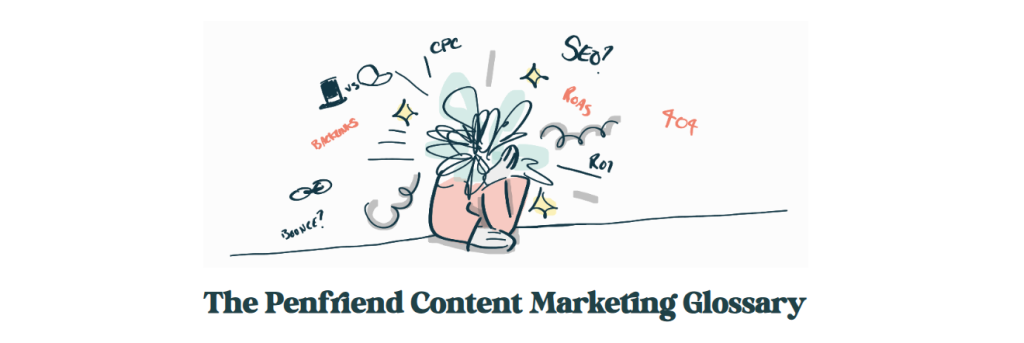Real AI content marketing examples, workflows, and tools from running Penfriend.ai. Tim Hanson explains how marketers are using it in the real world - with prompts, examples, and actual results. Learn what works (and fails).
How to Make AI-Generated Content Actually Land (And What Real-World Marketers Are Doing That Works)
TL:DR
- AI content marketing works best when you focus on process frameworks over individual prompts
- Successful AI workflows can reduce content creation time by 85% while maintaining quality
- The biggest AI content mistake is asking it to perform tasks you don’t understand yourself
- Real results: 300+ AI-assisted articles ranking for hundreds of terms with zero backlinking
I get asked about AI-generated content almost daily - especially from mid to senior-level marketers trying to scale output without sacrificing quality. Here’s a question that hit my inbox recently:
“Can you share your experience using AI for marketing content - including prompts, examples, and results?”
This hits on the biggest challenge I see marketers facing today: they want to leverage AI to do more with less, but they’re stuck wondering how to make it sound… not terrible. Let me walk you through how I’ve solved this for my team here at Penfriend, what I’ve learned from over 100 experiments, and where I think this is all going.
→ Prefer listening to reading? Grab the audio right here, just hit play:
AI Content That’s Real (And Actually Works)
Let’s be real - no one wants to read content that sounds like an LLM having an existential crisis.
At Penfriend.ai, we’ve been publishing AI-assisted content daily since early 2023. Here are three real-world examples of what we’ve built and how we make it work:
- The Penny Drop Newsletter → My daily marketing newsletter written with a custom GPT. Every email is written with the help of Echo, trained to capture my voice. And truthfully – without AI, I wouldn’t be able to publish daily AND still have it sound like me.
- Penfriend’s Glossary → We used AI to generate 300+ programmatic, SEO-optimized pages, each one reviewed and fact-checked by a human. It now ranks for hundreds of key terms and supports our entire topical authority strategy.
- Penfriend Blog → Every post starts in our platform, Penfriend, then gets human-edited. Penny handles structure and initial drafts; I focus on insights and personality.
Want to use AI for content but struggling to make it sound human and convert effectively? I’ve got you.
The Prompt Trap: Why Process Beats Prompts
I was asked: “Are there any specific prompts you swear by?” My answer might surprise you but it’s backed by 12+ months of testing.
I don’t swear by prompts. I swear by process.
What works today might fall flat next week - the models change too fast. But here’s what never fails:
“If you’re asking the model for output without defining the structure, you’re setting it up to fail.”
Instead of chasing “magic prompts,” I focus on process and frameworks. We train our AI to know what great output looks like, not just what the topic is. That’s the difference between a rough draft and a ready-to-publish post.
Tim Hanson’s AI Content Principle →
“The key is always giving the model an expected output format. If you’re asking for something without clearly defining structure, you’re setting it up to fail. Frameworks beat one-off prompts every time.”
Content Creation Workflow: Before vs. After AI
Blog creation used to be messy – hundreds of micro-decisions, dozens of sources to curate, and pulling it together into something that reads well AND ranks took about a week.
Now? I spend 20 minutes in the morning with my headphones on, having a conversation with my AI that’s trained to extract insights from me on any topic. It pulls out highlights, creates an SEO-optimized outline, and drafts the post in my voice.
Tim Hanson’s experience with AI content workflows →
“What used to take a week now takes under an hour, allowing focus on strategic thinking and personal insights while AI handles structural heavy lifting.”
Yes, I’m biased – this is exactly the software we’ve built. But that’s the reality. If it helps me, it helps anyone in my position.
Here’s what my old blog workflow looked like:
| Before (Traditional) | After (Penfriend-Powered) |
|---|---|
| Spend a week researching, outlining, writing | 20-minute AI conversation extracts my best thinking |
| Cobble together insights from scattered notes | AI clusters ideas and creates a clean structure |
| Write alone, edit endlessly | AI drafts in my tone - I just refine |
| Total: ~8-10 hours | Total: <1 hour |
“I get to do the parts I enjoy. The AI does the rest.”
That’s not a slogan - that’s the actual experience.
When AI Fails (And What I’ve Learned)
Of course AI has failed me. We’ve had drafts come out dull, hallucinate stats, or default to generic fluff. But those failures taught me something critical:
“AI doesn’t fail when you’re clear. It fails when you’re vague.”
The tighter the brief, the better the result. When we started giving models exact expectations – desired structure, voice, fact sources – the failure rate plummeted.
FAQ: Common AI Content Marketing Questions I answer
Q: What’s the best AI tool for content marketing?
A: Based on testing 20+ tools, the best approach combines custom GPTs for ideation with specialized tools like Penfriend for SEO-optimized structure.
Q: How do you make AI content sound human?
A: Train the AI on your specific voice and expertise – we’ve built this functionality into Penfriend (called Echo), then always add human insights and personal experiences that AI can’t replicate.
Q: What’s the biggest AI content failure you’ve seen?
A: Marketers asking AI to do tasks they themselves don’t understand, then blaming the AI when results don’t meet unexpressed expectations.
Q: How long does effective AI content creation take?
A: With proper systems: 20 minutes for ideation and structure, 40 minutes for human refinement and optimization.
The Bottom Line
The bottom line: AI-generated content doesn’t have to suck. With the right process, it becomes a superpower, turning slow, painful workflows into fast, scalable systems.
“The most important thing to remember is this: don’t chase prompts - build systems.”
Start by defining what great output looks like. Then train your AI to meet that standard. That’s how we scale quality, not just quantity.
Got a question about scaling content with AI?
Submit your question here, or if you want to dive deeper into using frameworks and custom workflows to scale high-quality SEO content, book a call with me.






